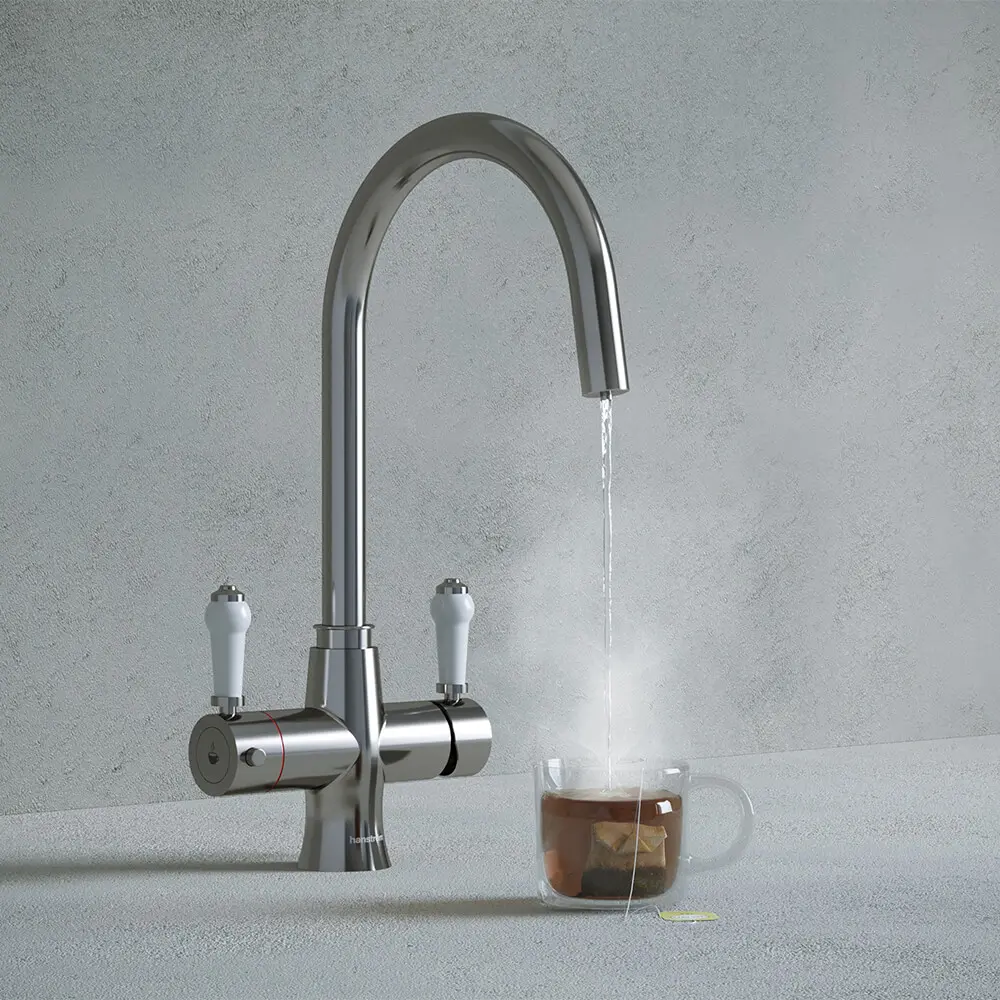Technology has revolutionised how we manage our workloads, leading to increased productivity and improved efficiency in almost every sector. Features such as mobile applications, automated processes, cloud computing and data analysis have completely shifted how work is managed – providing businesses with ways to optimise operations while minimising costs.
In this post, we explore 13 different capabilities of technology that can help improve workplace efficiency! Discover how these innovative solutions can impact your organisation’s performance, from automation tools to state-of-the-art kitchen appliances, collaboration platforms and beyond.
1. Automate Mundane Tasks
Increasing the efficiency of mundane tasks in the workplace is an ongoing process, and technology can be used as a powerful tool to make it happen. Automation helps reduce repetitive steps on small, laborious projects. Smart tools like AI-powered task management can assess and predict outcomes based on data to determine which processes should be automated first. By removing tedious, manual labour from the equation, staff are free to focus on more important tasks that add further value to their job roles.
Further advancements like robotic process automation (RPA) mean machines are constantly learning from collected data to automate labour-intensive processes which were previously too complex for automation. Overall, technology can help companies achieve greater productivity and cost savings by significantly improving the efficiency of mundane tasks in the workplace.
2. Streamline Communication
Technology can help streamline workplace communication, improving efficiency and saving time and money. From digital organisation tools that allow workers to share documents and collaborate on tasks in real-time to software that helps group messages into appropriate channels and keeps everything organised, technology is revolutionising how employees can interact with one another. Instant messaging platforms allow teams to exchange ideas faster, transforming many organisations’ workflow.
Additionally, advances in video conferencing allow businesses to save money by eliminating the need for costly travel while maintaining face-to-face communications. Streamlining communication through technology reduces costs and can improve employee morale through increased job satisfaction.
3. Conduct Online Meetings
The rise in remote working and increased reliance on technology to help organise and conduct business has made online meetings a vital way to keep teams and organisations running efficiently. Because of the power of modern software and applications, conducting meetings online simplifies communication between team members and can ensure that everyone is up to speed with the latest information. Online meetings don’t have time or location limitations, meaning businesses can connect their employees who may be spread across different countries.

Furthermore, sharing screens, real-time messaging, video conferencing and other features provide a streamlined process for holding successful online meetings without any added strain or cost. By utilising such tools, organisations can save time and money—while strengthening relationships between colleagues over vast distances by creating convenient virtual connections.
4. Improve Break Room Amenities with Boiling Water Taps
Boiling water taps represent a cutting-edge way of improving break room amenities and workplace efficiency. In the fast-paced world of the modern office, making tea or coffee quickly can be invaluable, as workers no longer have to wait for a kettle. 3-in-1 taps are a cost-effective way to offer instant boiling water, and ours can fill up to 7 or 8 cups at a time – think of how fast the coffee run could be finished! Plus, 4-in-1 taps come with a filtered chilled water function, providing pure drinking water for staff and clients.

In addition to saving time while making tea and coffee, boiling water taps are far more energy-efficient than kettles, potentially reducing electricity costs in the long run. Since boiling water tap systems come in multiple forms, employers can find one that fits their budget and workplace requirements. With this technology, workplaces will benefit from improved efficiency and employee satisfaction.
5. Minimise Paperwork
Technology can be a formidable tool to help streamline the workplace and reduce paperwork. By relying on digital document management systems and electronic filing, it can eliminate mountains of paper clutter that consume office desks, drawers, and cabinets. In addition, digitized documents can be accessed quickly and easily by anyone with access rights. This significantly reduces the time needed to find paper documents and ensures data protection through encryption mechanisms.
Moreover, these digital systems also allow users to set automated reminders for tasks needing attention or send notifications when they are completed successfully. Ultimately, technology can be an essential tool for reducing manual paperwork enabling organisations and businesses to become more efficient and focused in task completion.
6. Invest in Cybersecurity
Investing in cybersecurity should be a top priority for businesses of all sizes, as it has become even more critical as technology advances and becomes more accessible. Cybersecurity can protect a business’s data while also ensuring the safety of its employees and customers.
Implementing stronger cyber-protection practices can save the business money by preventing costly and destructive breaches and promote long-term gains with improved workplace efficiency. Technologies such as end-point monitoring allow businesses to track employee login times and measure network performance to quickly identify and address any weaknesses or issues with the server or individual systems.

Additionally, investing in cyber protection services like antivirus scanning, malware protection, and identity management tools help safeguard against hackers who are continuously updating their methods to identify and target weak links.
7. Incorporate IoT (Internet of Things) Devices
Implementing IoT devices in the workplace can be an effective measure for improving organisational efficiency. Employees can access real-time operational data to help identify strengths and weaknesses by connecting tangible machines and objects to the internet. This data can be valuable insight for making quick decisions regarding changes or upgrades that may need to be made, which can reduce costly delays and frustration.
Additionally, with smart sensors and intelligent technology, organisations can better monitor inventory levels and quickly order more resources when needed without manual intervention. With the right implementation process, IT enables companies to make the most of their resources while avoiding potential structural issues that could arise. All in all, the introduction of IoT devices is a progressive move towards driving workplace efficiency and optimising operations across a range of industries.
8. Utilise Learning Management Systems (LMS)
Technological advances make it increasingly important for organisations to utilise systems such as Learning Management Systems (LMS). An LMS gives employees access to all relevant information and training materials at one central point. This increases efficiency and allows organisations to provide more targeted and effective training programmes tailored to individual needs.
Additionally, LMSs minimise time wasted on tasks such as searching through online databases or looking through hard-copy information. Furthermore, they come with helpful analytic tools that give insight into employee progress and engagement, allowing companies to design more sophisticated training plans. Therefore, it is beneficial for companies of all sises to invest in Learning Management Systems, which can improve efficiency in workplace strategies.
9. Upgrade to Cloud-Based Services
Upgrading to cloud-based services transforms businesses of all sizes, allowing them to work smarter and more efficiently. As everyone, from large corporations to home-based freelancers, moves to a virtual platform, the advantages of utilising cloud-based services for increased productivity are enormous. From improved file-sharing capabilities, collaboration tools and access to real-time data analytics, cloud-based services are making it easier for teams to stay in sync, collaborate with remote employees and make smarter decisions based on up-to-date evidence.
Cloud computing also eliminates the need for expensive hardware and dedicated staff to maintain IT systems while providing scalability options that allow companies to invest in new technologies when needed quickly. Ultimately, choosing cloud options saves money while increasing operational efficiency – something every business can appreciate.
10. Introduce Flexible Work Arrangements
Utilising the latest technology for flexible work arrangements can significantly improve workplace efficiency. Employers can achieve greater productivity from employees with fewer resources with an appropriate remote working system and secure connectivity. By allowing workers to access their company’s network from any location, they can complete tasks without sacrificing other significant commitments. Technology-driven flexible work arrangements increase employee satisfaction and loyalty while empowering them with more autonomy over their work schedules.

Additionally, it can foster creativity due to increased collaboration through advanced communication systems that allow team members to connect easily and engage productively with one another anywhere in the world. These advantages make flexible work arrangements supported by technology an excellent way for companies to become more effective working environments.
11. Take Advantage of Project Management Software
Technology has revolutionised the workplace for decades, and project management software is no exception. It can help streamline day-to-day operations by consolidating projects and tasks into one space, making assigning jobs and tracking a project’s progress easier. As tasks are completed, the software can automatically adjust deadlines for the remaining pieces of the project, ensuring that all goals are achieved on time.
Moreover, this type of software allows managers to have an overarching view of each department’s workload, ensuring no resources get overused or underutilised. Using project management software within a company saves time, energy and money as teams have comprehensive access to their accomplishment records and communication reports available at their fingertips. It also ensures that workers remain connected in real-time and can easily find essential documents from past projects. This intuitive technology allows companies to benefit from faster productivity cycles while staying organised.
12. Use a Customer Relationship Management (CRM) System
Implementing a Customer Relationship Management (CRM) system in the workplace can positively affect efficiency. CRM enables companies to track customer interactions and store their data more securely. Additionally, CRM systems provide employees with automated task alerts, so supervisor corrective steps can be taken if deadlines are not met.
With accurate reporting of key performance indicators, managers can also evaluate which employees need additional training or support to reach their maximum potential. Implementing this technology into a company’s workflow not only aids in reducing overall costs but facilitates in providing timely customer responses as well. Using CRM systems will significantly improve workplace efficiency by streamlining the work processes for higher-quality customer service and improved employee performance.
13. Explore Opportunities to Use AI Tools
As technology plays a larger role in the workplace, utilising artificial intelligence (AI), tools can allow companies to improve workplace efficiency. AI tools may include virtual assistants and bots which can automate routine tasks, such as scheduling meetings, producing reports, or managing customer service calls. Automating mundane tasks allows employees to focus on more meaningful and creative work, giving teams the potential to unlock innovative solutions faster.

Additionally, AI-powered applications can enable teams to make smarter decisions on the fly by predicting consumer trends, assessing current performance against industry standards, and identifying high-potential opportunities. Companies that embrace AI tools have the potential to not only increase productivity but also create more value for all stakeholders involved.
Conclusion
Technology has transformed the workplace countless ways, allowing companies to become more organised, productive and efficient. Businesses can maximise resources and reach their targets faster using modern solutions such as project management software, customer relationship management systems, and AI tools.
Moreover, these technologies encourage team collaboration and enable remote employees to stay connected and engaged. Companies that embrace these new solutions can become more agile, efficient and successful in an ever-changing business environment.Read more about the benefits of boiling water taps, learn how a boiling water tap works or shop our full collection of boiling taps.





